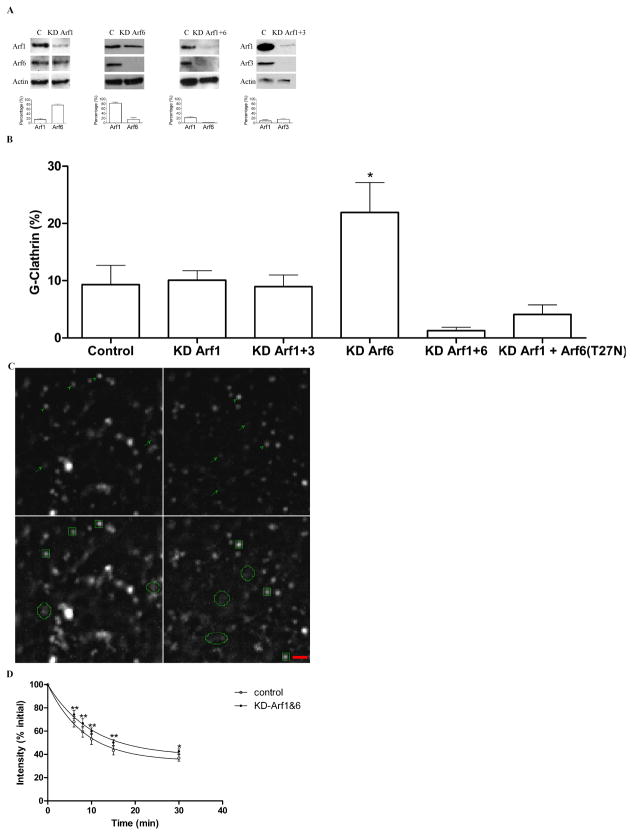Figure 6. siRNA-mediated depletion of Arf6 and Arf1 inhibits G-clathrin formation, and fast recycling of internalized Tf.
A) Knockdown of Arf 6, Arf1 and Arf3. Cells were transfected with GFP-clathrin and with either control siRNA (C) or with siRNAs directed towards Arf6 alone (KD Arf6) or towards Arf1 and Arf6 (KD Arf1+6), or towards Arf1 and Arf3 (KD Arf1+3). Upper: Immunoblot from a representative experiment, with control sample in left lane and indicated siRNA in right lane. Lower: Quantitation of Arf6, Arf1 and Arf3 levels normalized to control, from three independent experiments.
B) G-Clathrin structures in control and siRNA-depleted preparations were quantitated as described in Experimental Procedures and Fig 1B.
C) G-Clathrin structures are BFA-resistant in Arf6-depleted cells. COS-1 cells were depleted of Arf6 and imaged (1 sec continuous stream, 30 frames) before and after BFA treatment (10 μg/ml, 15 min) as described in Methods. The upper left panel shows a single frame before BFA treatment and the lower panel shows the maximum projection 30 frames captured during 1 sec. The right panels show the same region of the cell following BFA treatment, as single frame (upper) and maximum projection (lower). G-Clathrin structures are indicated by arrows in upper panel single frames, and by circular profiles in lower panel projections. Relatively stationary clathrin structures, including coated pits, are indicated by arrowheads in the upper panels and by squares in the corresponding maximum projection in lower panels. Bar, 1 μm.
D) Knockdown of Arf6 and Arf1 inhibits fast recycling of internalized Tf. Cells were treated with control or Arf6 and Arf1 siRNAs, transfected with GFP-clathrin, and recycling of Alexa633-Tf was measured as described in Methods. The figure shows data from 4 independent experiments analyzed using two-way ANOVA with Bonferroni posttest (*p<0.05, **p<0.01).

